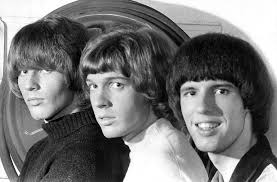
Rock N Roll Love Songs (Dino 1990)
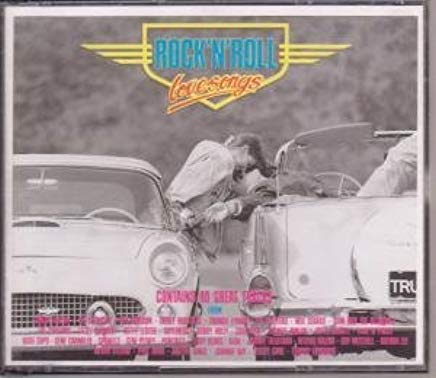
The first in the series of what I believe to be two double CD sets was issued a year earlier than the equally essential “More Rock N Roll Love Songs“. Between them with their forty tracks apiece they have pretty much everything I might want to listen to in the world of rock n roll love songs with this one having the edge in terms of quality of the tracks. The follow-up had the odd track by British artists but here it is American all the way. Once again with these essential CDs it is important to know what tracks can be found on them so here you will find the tracks listed with their highest chart position (UK/US) if released as a single and links if I have more information on the artist elsewhere on the blog. I’ll pick out a handful of tracks to give a flavour for what makes these CDs essential.
Track Listings
CD1
1.Blue Velvet – Bobby Vinton (1963) (UK #2- 1990, US#1)
Kicking off this nostalgia-fest of 40 tracks is another artist who like The Righteous Brothers, Ben E King, Jackie Wilson amongst others had to wait decades before exposure on other media gave them a belated huge hit. Teen heartthrob Vinton had to wait twenty-seven years for his US chart-topper to almost do the same again in the UK. This was after being featured in a television advert and its earlier presence in the 1986 David Lynch film of the same name. The song itself heralded from a decade earlier when it was a Top 20 hit for crooner Tony Bennett. There’s a wistful, innocent approach from Vinton which still sounds good today. Vinton due to his family background became known as “The Polish Prince” and was a much bigger star than we remember today scoring 30 US Top 40 hits including three more number ones. His hit career in the US spanned from his first chart-topper “Roses Are Red” in 1962 to a cover of “Beer Barrel Polka” in 1975, having hits throughout the time UK artists were dominating the US charts. UK response to this artist was far more muted with only his first US chart-topper making the UK Top 30 until the re-release of this song.

2. Will You Still Love Me Tomorrow- The Shirelles (1961) (UK#4, US#1)
Another group whose importance in the history of pop has been overshadowed by later acts such as The Supremes. They were highly influential to the myriad of girl groups who came after and this is perhaps the most influential girl-group track of all. Written by Gerry Goffin and Carole King this gem of a song was the second of the girls’ twelve US Top 40 hits and the first of their two number 1’s (Their second “Soldier Boy” was featured on “More Rock N Roll Love Songs“. This is their finest moment with the insecurity of teen love evident in Shirley Owens’ vocal.

3. Only The Lonely- Roy Orbison (1960) (UK#1, US#2)
4. All I Have To Do Is Dream – Everly Brothers (1958) (UK#1, US#1)
5. Why Do Fools Fall In Love – Frankie Lymon & The Teenagers (1956) (UK#1, US #6)
This early Rock N Roll UK chart-topper was out of place in the company of fellow UK 1956 alumni Ronnie Hilton, Winifred Atwell, Doris Day and Anne Shelton. This was rare proof that music had moved on since the war years and must have been a disturbing listen for many tuning into the wireless as 13 year old Frankie’s rough-at-the-edges voice tore into this song written by himself in tandem with George Goldner. The Teenagers, an early example of a multi-racial group brought to Goldner a song called “Why Do Birds Sing So Gay?” which the producer and owner of Gee Records adapted to something he was working on. Singling out Lymon as composer led to later court action from other members of the group but it was not until 1992 after the release of this CD that they were credited, that was until a court order overturned the decision because it had taken too long to get to court. Lymon, himself of course, by this time was long dead (at the age of 25 from a heroin overdose). But back in 1956 this must have looked like a new beginning for music, the hope of a very youthful gifted and talented singer/songwriter leading a group of youngsters of African-American and Puerto Ricans. Their material after this was just not as good, despite the fabulous title of 1957’s “I’m Not A Juvenile Delinquent”. By the end of 1957 the hits had dried up.

6. The Great Pretender – The Platters (1956) (UK#5, US#1)
7. Breaking Up Is Hard To Do– Neil Sedaka (1962) (UK#7, US#1)
8. Teenager In Love – Dion & The Belmonts (1959) (UK#28, US#5)
9. He’s So Fine – The Chiffons (1963) (UK#16, US#1)
10.Tears On My Pillow – Little Anthony & The Imperials (1958) (US#4)
11.Love Letters – Ketty Lester (1962) (UK#4, US#5)
This lady had a lovely voice, shame most people only heard it on this track which was a cover of a pop standard dating from the 1940’s. Lack of subsequent success meant that she gave up singing professionally by the 1970’s and turned to acting, spending six years on “Little House On The Prairie” as Hester-Sue after which there was a gospel album in 1984 and nothing since then. Still going strong at 84 this artist who was born Revoyda Frierson should have become a much bigger star. For sophisticated pop at its best check out her 30 track “Greatest Hits” collection available on Spotify.

12. Since I Don’t Have You – The Skyliners (1959) (US#12)
13.Raining In My Heart – Buddy Holly (1958) – Amazed to find out this was never an A-side single and so no chart positions.
14.Rhythm Of The Rain – Cascades (1963) – UK#5, US#3)
15.Venus- Frankie Avalon (1959) (UK#16, US#1)
16.It’s In His Kiss – Betty Everett (1964) (US#6, UK#34 -1968)
Also known as “The Shoop Shoop Song” this launched Mississippi born gospel vocalist Betty’s pop career. It didn’t chart originally in the UK and a later single a duet with Jerry Butler fared one place better for her later on in 1964 in the US. In 1964 there was little room in the UK charts for US acts and it wasn’t until Betty scored a 1968 Top 30 hit here with “Getting’ Mighty Crowded” that this song was re-released and achieved minimal chart action. The most famous version of course is by Cher, who recorded it for her movie “Mermaids” and scored a small US Top 40 hit but topped the charts for the first time as a solo artist in the UK in 1991. The best version remains the 1975 UK#6 hit for the hugely under-rated Linda Lewis who steams through the song with extraordinary energy and gusto and an incredible vocal performance.

17. Hey Paul – Paul & Paula (1963) (UK#8,US#1)
18. Chapel Of Love – The Dixie Cups (1964) (UK#22, US#1)
19. Duke Of Earl – Gene Chandler (1962) (US#1)
20. Goodnight Sweetheart – The Spaniels (1954)
CD 2
1.Something’s Gotten Hold Of My Heart – Gene Pitney (1967) (UK#5)
2. Born Too Late – The Poni Tails (1958) (UK#5, US#7)
US one-hit wonders but did make the UK charts a year later with “Early To Bed”, proof that the 1950’s teenager was just growing up too soon drooling over an older boy who wouldn’t even look the way of Ohio trio Toni Cistone, Karen Topinka and Patti McCabe. This was originally a B-side to a track called “Come On Johnny Dance With Me” which has been long forgotten. Not this track, which regularly turns up as a perfect illustration of the adolescent experience. To modern ears there’s something a little creepy about the whole set-up here.

3. To Know Him Is To Love Him – The Teddy Bears (1958) (UK#2, US#1)
Talking about creepy, this must be one of the only songs based on the epitaph of a headstone in this case the father of song composer and Teddy Bear member Phil Spector, sorry if you didn’t know this because now that you do it will always make this sound a little macabre which might be a fitting opening to the Phil Spector story which has more than its fair share of disturbing moments. There’s sweetness and darkness in this track, which is a heady combination indeed.

Phil Spector is on the left
4. The Wanderer – Dion (1961) (UK#10, US#2)
By 1961 Dion had lost his Belmonts and was going it alone which gave him his only appearance in the UK Top 10 (and was also a reissued #16 hit in 1976). In his homeland it stalled at number 2 whereas his previous hit, the inferior “Runaround Sue” had given him his only chart-topper. An early mention of the tattoo in a pop song I’ve always liked the lines “I tear open my shirt I’ve got Rosie on my chest”. Well, I’ve always assumed it was a tattoo, I suppose poor old Dion could have been suffering from scarlet fever!

5. Poetry In Motion – Johnny Tillotson (1960) (UK#1,US#2)
6. Donna- Ritchie Valens (1958) (UK#29, US#2)
7. Singing The Blues – Guy Mitchell (1956) (UK#1, US#1)
8. Oh! Carol – Neil Sedaka (1959) (UK#3, US#9)
Sedaka’s second hit on both sides of the Atlantic (different songs charted for his debut chart appearance), this was really the song which established this New Yorker singer/songwriter on a track composed alongside long time collaborator Howard Greenfield. It launched a chart career in the US which lasted into the 1980’s and led to songs written for many other artists. When there were quiet times he focused on different markets, scoring an Australian number 1 after a lean period at home and for a time made his home in the UK when he signed to Elton John’s Rocket label. In 1972 a reissue of this track saw him back in the UK Top 20. Dedicated to his old high school girlfriend Carole King, this was a result of Sedaka carefully analysing what made a hit record when it looked like he was about to be dropped by his record label for not delivering hits. Now entering his 80’s he is still going strong.

9. I’m Sorry – Brenda Lee (1960) (UK#12, US#1)
10. Sealed With A Kiss- Bryan Hyland (1962) (UK#3, US#3)
11. True Love Ways – Buddy Holly (1960) (UK#25)
12. Diana – Paul Anka (1957) (UK#1, US#1)
One of the great scene-setting opening couplets in popular music “I’m so young and you’re so old/This my darling I’ve been told”. Anka is here lusting over a cougar in this his debut hit which unsurprisingly livened up staid old 1957 by topping the charts on both sides of the Atlantic. Canadian Anka, like Sedaka, then set off on a chart career which lasted decades and as a songwriter he is versatile and impressive. He must have made a fortune by penning the English lyrics to “My Way” and was still on the charts as late as 2014 as a composition he had penned with Michael Jackson back in the 80’s “Love Never Felt So Good” became a posthumous duet hit with Justin Timberlake. Certainly not afraid to take risks (have you heard his swing version of Nirvana’s “Smells Like Teen Spirit”?) Anka is another of those artists whose importance in the history of popular music has been under-stated and this is the track which started everything off.

13. The End Of The World – Skeeter Davis (1963) (UK#18, US#2)
14. Just Walking In The Rain – Johnny Ray (1956) (UK#1, US#2)
Ray’s highly emotive drama-laden vocal style led to a raft of nicknames my favourite of which is “The Nabob Of Sob”. Pretty much almost forgotten now but really induced mass hysteria in his early days from adoring fans and was a much bigger star in the UK than in his homeland. He made hearing aids cool decades before Morrissey. This was his first US hit but he had already notched up a massive 14 Top 20 UK hits by the time this, his second UK number 1 was released. By the dawn of the 60’s the chart career was over, rumours about his sexuality undoubtedly damaged his career in the US.

15. It’s My Party – Lesley Gore (1963) (UK#9, US#1)
Another artist whose career probably suffered because of sexuality, Gore found it hard to live up to the jilted teenager looking for a boy to love as set out in this debut hit. A classic song which even today you can’t listen to without feeling outrage towards Johnny and Judy for doing this at Lesley’s party. There’s a sense of relief when you know that her follow-up US hit was “Judy’s Turn To Cry”- she soon got what she deserved! It started off a string of hits which went on to the mid 60’s although in the UK she only bothered the charts on one more occasion. In the 80’s she got an Oscar nomination for her song-writing work on the “Fame” movie soundtrack and after coming out as a lesbian in 2005 (not a surprise to anyone who knew her as she never hid her sexuality) she became something of an ambassador for LGBTQ issues in the US until her death in 2015 leaving behind her partner Lois who she had been with for 33 years.

16. Only You- The Platters (1955) (UK#5, US#5) – In the UK this was a double A sided track with “The Great Pretender” also on this CD.
17. It’s All In The Game – Tommy Edwards (1958) (UK#1,US#1)
18. When Will I Be Loved – Everly Brothers (1960) (UK#4, US#8)
19. Baby It’s You – The Shirelles (1962) (US#8)
20. It’s Over – Roy Orbison (1964) (UK#1, US#9)
And as Roy hits that last dramatic note it is indeed over but here are 40 classics of the late 50’s and early 60’s. The tracks tend to be a little earlier than those on the also essential follow-up “More Rock N Roll Love Songs” and as they were the first pick of the bunch maybe just a little more predictable choices, the songs you might expect to hear on such a compilation but then that is also because so many of them are classics that have stood the test of time. A number of these tracks are over 60 years old for goodness sake! I try to put that into context sometimes, when I was a kid growing up in the 70’s it is like listening to music from the 1910’s which nobody did in those days!
Rock N Roll Love Songs is currently available on Amazon in the UK for £4.63 new and from £0.67 used. It can be downloaded for £7.99


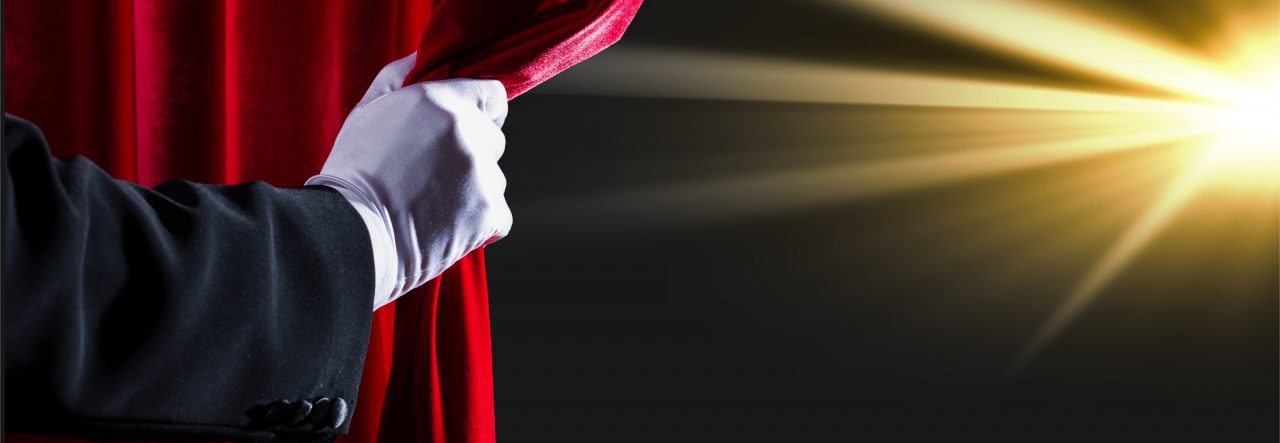








 Jimmy Ruffin
Jimmy Ruffin
















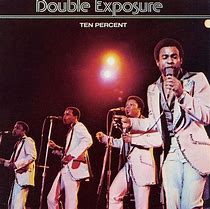


 Jocelyn Brown
Jocelyn Brown













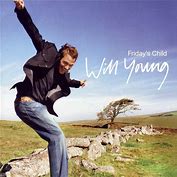














 Cathy Dennis in her solo hit-making days
Cathy Dennis in her solo hit-making days









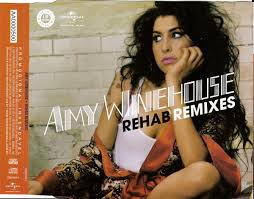












 CD from the same Funk Essentials series – worth seeking out
CD from the same Funk Essentials series – worth seeking out




 Barry with Love Unlimited
Barry with Love Unlimited



